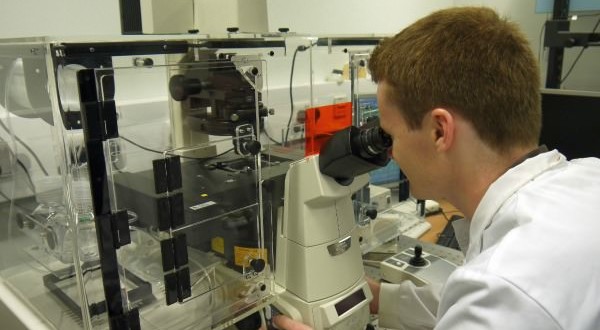Scientists at Australian National University have discovered at technique that makes atomic-force microscope probes 20 times more sensitive and adept at identifying forces as tiny as the weight of an individual virus.
The technique employs laser beams to cool a nanowire probe to minus 265 degrees Celsius.
Dr. Ben Buchler, one of the researchers from the Research School of Physics and Engineering at ANU, said that this nanotechnology allows for extreme sensitivity that probing through a microscope becomes even more accurate.
“The level of sensitivity achieved after cooling is accurate enough for us to sense the weight of a large virus that is 100 billion times lighter than a mosquito,” he explained.
The team’s method could help further improve the resolution of atomic-force microscopes. These microscopes are used to measure nanoscopic matter and tiny substances between molecules.
The new probing method, however, is not without its flaws. Because the nanowires used are so tiny, their functions are easily disrupted by vibration.
Prof. Ping Koy Lam, a co-author of the research, said that the probe vibrates even at room temperature and makes “measurements noisy.” He shared though that this noise can be stopped by shining cooling lasers on it to counter the thermal interruption.
However, the trickier part lies in the fact that the probe cannot be used because the laser overwhelms it. The research team has to move quickly then, turning the laser off and doing measurements quickly before the probe heats up again.
PhD student Harry Slatyer shared that through trial-and-error they will eventually find a solution to the flaws of the technology.
He said that with intelligent data processing scientists can improve the sensitivity of the probe and do away with cooling lasers.
Agencies/Canadajournal
 Canada Journal – News of the World Articles and videos to bring you the biggest Canadian news stories from across the country every day
Canada Journal – News of the World Articles and videos to bring you the biggest Canadian news stories from across the country every day



